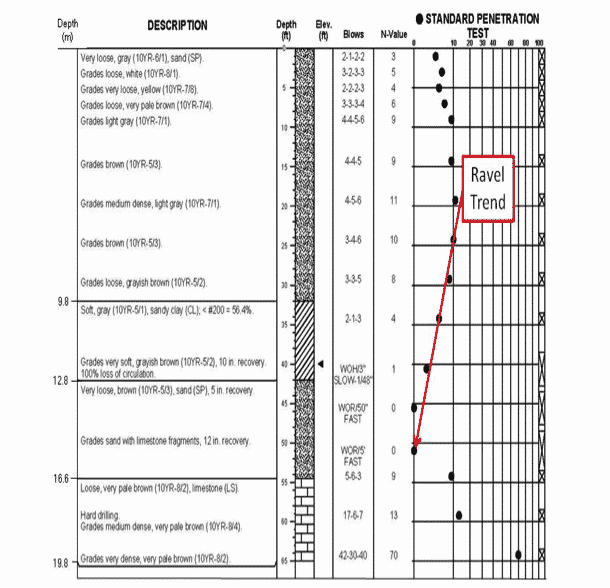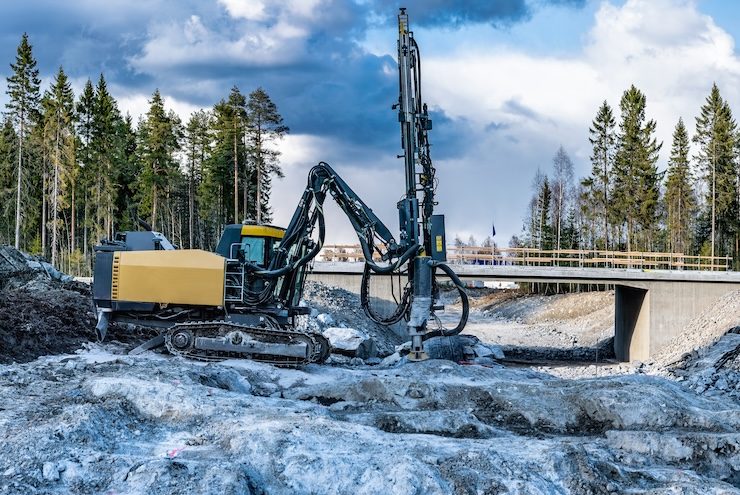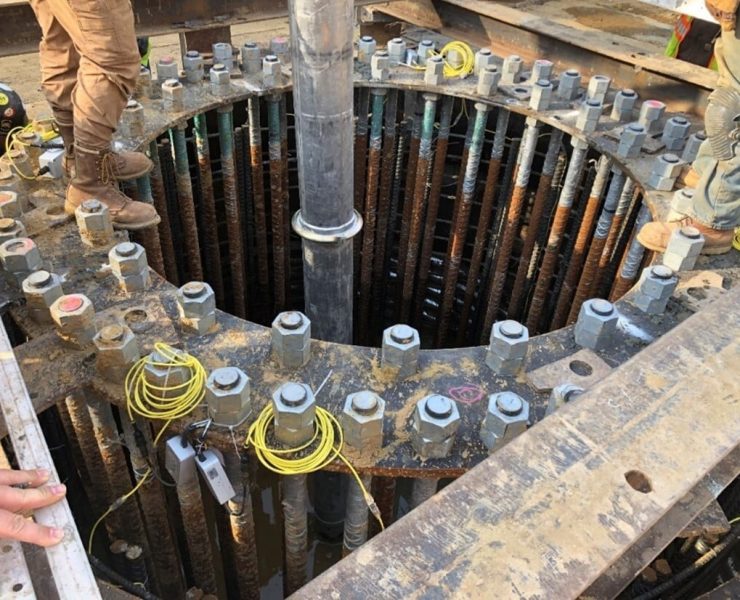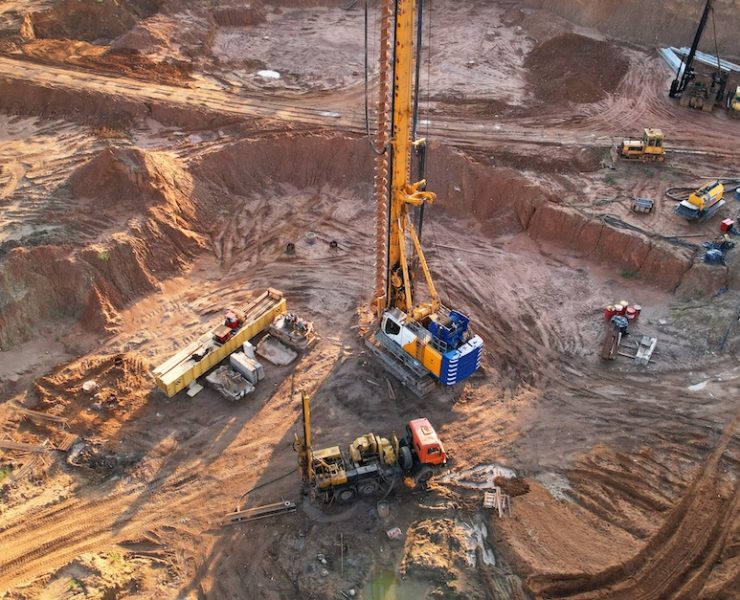Sinkholes: Natural Phenomena And Headache
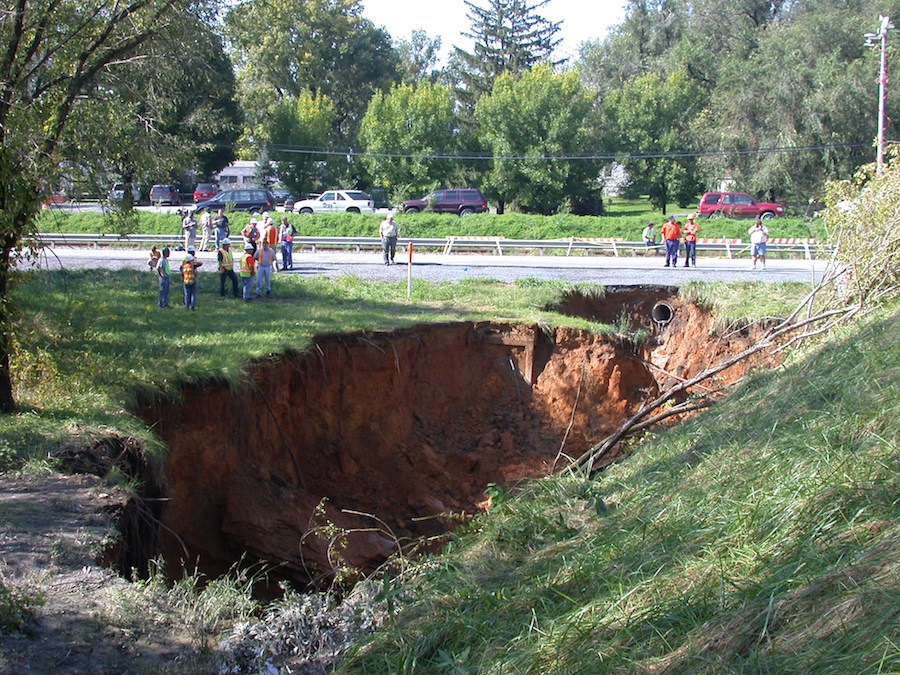
F irst off, what is a sinkhole and how is that different from sinkhole activity?
irst off, what is a sinkhole and how is that different from sinkhole activity?
A sinkhole is a is a depression at the land surface that is the result of soils settling, either slowly or suddenly, into cavities in the subsurface that were caused by the dissolution of limestone. This settlement of soils is referred to as raveling and the cavities are also sometimes referred to as voids. Sinkhole activity is not visible at the land surface but rather is inferred from observations and the results of tests carried out to detect its presence. Raveling is identified in the subsurface from a standard penetration test (SPT) boring’s record of blow counts or “N-Values. In an SPT boring, a sampling tube is driven into the ground by successive blows of a 140 pound hammer falling from a height of 30 inches. The hammer blow count for the first 6 inches is recorded but not counted because the first 6 inches is considered a seating interval where previous drilling activities may have disturbed the soils. The hammer blow counts for the next two 6-inch intervals are recorded separately but summed as the “N-Value” for the one foot sample interval. In short the “N-Value” is a measure of the density of the soil at the sample depth. One would normally expect increasing density with increasing depth due to the additional pressure as more soils are added as seen in the figure below.
Geologists and engineers infer raveling from a series of decreasing “N-Values” with increasing depth as seen below in the next figure.
Voids in the subsurface are inferred from what is called a fast weight-of-rod drop where in the SPT sampler and its attached drill rod free fall for some distance. A 6-inch fast weight-of-rod drop would represent a small void. Conversely, a 6-foot fast weight-of-rod drop would indicate a void 6 feet high at that location. A distinction is made between a slow and fast weight-of-rod drop because a slow drop indicates there is soil present resisting the rod drop where as a fast drop indicates no soil resistance. Loss of drilling fluid circulation is another SPT boring result from which we can infer sinkhole activity depending on the circumstances under which the loss is observed. Normally an SPT boring is kept open by circulating a viscous drilling fluid down through the center of the drill rod that exits the drill bit and carries the drill cuttings (soil) back up to the mud tub at the surface. A loss of circulation means that the drilling fluid and drill cuttings are flowing out of the hole into voids in the soil or rock formation. A loss of circulation well above the limestone, particularly when associated with a raveling trend is strong evidence of sinkhole activity at depth. The presence of raveling, voids and loss of circulation are but three of a number of indicators of sinkhole activity.
Drilling Issues Common to Subsidence Investigations
Extra precautions should be observed while drilling in karst areas. A majority of investigations are on residential properties, all of which have utilities, so doing utility locates is very important for safety. Not only should underground utilities be cleared, but overhead as well. Often, site conditions require accessing the back yard of the property, so a narrow footprint is required on drill rigs. Further, property damage from accessing the borehole should be minimized, so small, lightweight drills with rubber tracks work well for access but may also require plywood, particularly for turning corners without tearing up the lawn. The right drill rig is always important for the job. In Florida, boring depths of 50 feet are common, but can extend to 100 or even 150 feet.
During drilling, the mast should be checked regularly and often for verticality, as the act of drilling can initiate a sudden sinkhole collapse or form a depression, which can develop slowly. Losses of circulation of the drill fluid can be a precursor to a collapse, so that is when to be most vigilant. Partial or full collapses of the borehole are common in loose sand and soft limestone common to Florida, which makes having temporary casing a must. Some drillers will make the drilling fluid thicker than usual to help seal off the borehole, but this can lead to wear and tear of the equipment.
Like all geotechnical investigations, the information we get from soil borings and rock coring is critical, but in sinkhole/subsidence investigations, there is always the threat of a lawsuit. SPT borings are to be done according to ASTM standards. Deviations of those standards can result in a lawsuit, with dispute over the meaning of the test results and questions about the competency of the company doing the drilling and engineering evaluation. Numerous lawsuits have been initiated and are ongoing over this very issue. Therefore, the drill crew must follow the protocols and the engineer/geologist or his representative must take detailed drill notes, such as fast or slow drops observed during weight-of-hammer or weight-of-rod intervals. This may sound like “over-kill”, but consider that a fast drop may indicate a void; a slow drop almost certainly means that soil is present and not a void. The whole case can hinge on these material facts.
After borings are complete, environmental regulations require the proper grouting of the borehole to prevent flow pathways from the surficial water system to the deeper aquifer. If the grout is not mixed and placed correctly, excessive shrinkage of the grout will result in a small surface depression that the homeowner can mistake for a new sinkhole. This, of course, results in another trip to the site to correct the situation.
I think I have sinkhole damage, what do I do now?
The short answer is call your insurance company. Prior to changes to the Florida Statutes regarding insurance regulations passed in 2011, any crack or damage to a structure required a full sinkhole investigation. However, at this point in time, most homeowner insurance contracts for sinkhole coverage stipulate that structural damage caused by sinkhole activity is a covered loss. Under current Florida Statutes, a claim for sinkhole coverage is handled through a two step process. The first is a structural damage assessment to determine if the structure has in fact experienced structural damage as defined in the Statute. If there is no structural damage as defined in the statute then there can be no structural damage caused by sinkhole activity and the process stops. If structural damage is determined to exist then a second phase of the investigation, determination of cause, is initiated. If no sinkhole activity is found the process stops. However if sinkhole activity is found to be the cause of the structural damage then a remediation plan is prepared by a Professional Engineer and carried out by licensed geotechnical specialty contractors.
What are the indicators of sinkhole activity during subsurface investigations?
What should be done if there is suspicion of sinkhole damage to a property?
If there's suspicion of sinkhole damage, it is recommended to contact the insurance company, as changes in Florida Statutes allow for structural damage assessment covered by most homeowner insurance contracts for sinkhole coverage.















